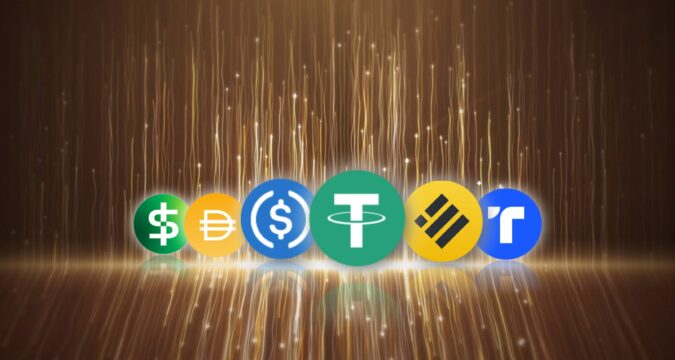
Cryptocurrencies are known for their wild volatility which makes them to be regarded as risk assets. This is the reason why many people avoid cryptocurrencies for payment and even as investment.
To increase the confidence of users, crypto developers came up with the idea of a stablecoin. As the name implies, stablecoins are “stable” cryptocurrencies that have a relatively fixed value. Because of this attribute, stablecoins have become rapidly popular even among those who didn’t like cryptocurrencies initially.
They are particularly useful in decentralized finance where transactions can be carried out without the need for a central entity such as a bank or other financial institutions. In this guide, we explore what stablecoins are, the types and how they function.
What Are Stablecoins?
Simply put, stablecoins are stable cryptocurrencies. They are stablecoins that derive their value from some external asset, such as a fiat currency like USD, a precious metal like gold, or some other commodity. Some stablecoins are even regulated by algorithms without deriving value from any actual asset.
Although stablecoins are pegged to other assets and are therefore relatively stable, they are still technically cryptocurrencies because they are based on blockchain technology and are decentralized just like any other crypto assets.
Stablecoins however do not increase in value much, so if you acquire a stablecoin, it must be with the intent of simply holding it at a fixed value but not with the desire to see the value increase, because the stability makes this impossible.
Types of Stablecoins
There are different types of stablecoins, each named based on the way it derives its value. The following are the most common types.
Fiat-backed Stablecoins
Fiat-backed stablecoins derive their value from fiat currencies like USD, EUR, and GBP. Every unit of this stablecoin in circulation is usually pegged to one unit of the fiat currency it is pegged to, that is in a 1:1 ratio.
This means that for every one fiat-backed stablecoin in circulation, there is 1 USD in reserve as cash or cash equivalent, because that’s where the stablecoin derives its value from.
Crypto-backed Stablecoin
These are stablecoins that are backed by cryptocurrencies rather than by fiat currency. The problem is that cryptocurrencies are volatile, so instead of having one stablecoin to one unit of the supporting cryptocurrency such as Bitcoin, such stablecoins are over collateralized to ensure that the price remains stable.
For example, a stablecoin backed by Bitcoin can be in the ratio of 1 stablecoin to two BTC so that even if Bitcoin decreases in value, it will take long before the stablecoin’s value gets affected.
As expected, crypto-backed stablecoins are less stable than fiat-backed stablecoins, so you need to watch the asset your stablecoin derives value from to know when to pull out maybe.
Metal-backed Stablecoins
Stablecoins in this category are backed by precious metals such as gold and silver from which they derive their value. Though this makes them quite centralized, they are also quite stable compared to the other stablecoins listed above.
Stablecoins backed by precious metals make it possible for investors to invest in such precious metals without having to directly buy the precious metals.
Algorithmic Stablecoins
These are stablecoins whose circulating supply and value are regulated by an algorithm rather than being backed by any asset. The algorithm keeps the value of the stablecoin from reaching extreme levels.
If the price of the stablecoin rises above $1, the algorithm releases more stablecoins into circulation to reduce the price. If the price crashes however, the algorithm withdraws some stablecoins from circulation so that the price can recover.
The interesting thing about algorithmic stablecoins is that even if your number of stablecoins may change, your share of the stablecoins remains unchanged. According to the developers of such stablecoins. Such stablecoins are better equipped to handle shock in demand which fluctuates wildly.


